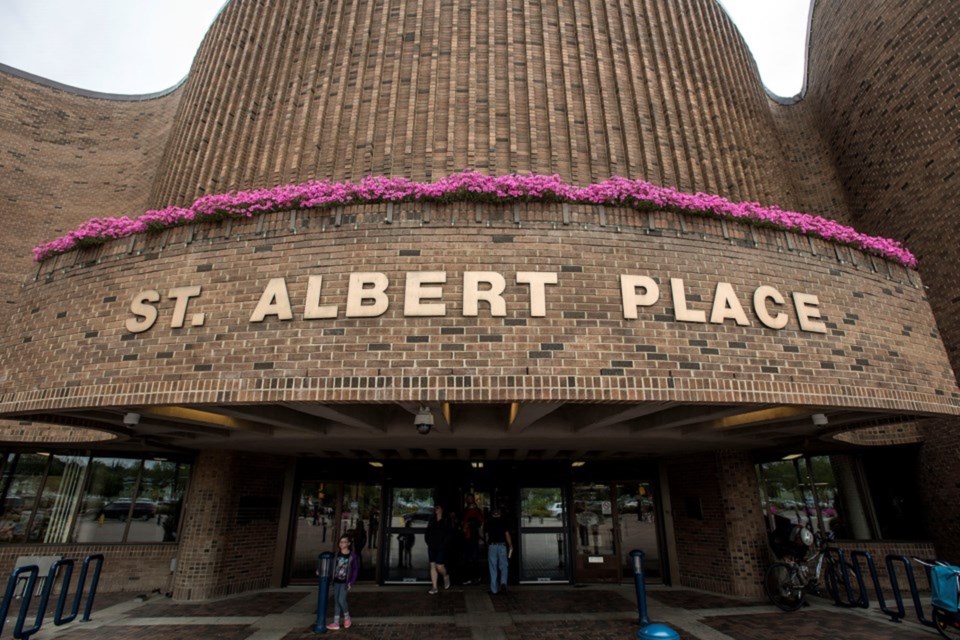St. Albert city council will be discussing and debating two major items during this week's council meeting: first reading of the St. Albert West Area Structure Plan (ASP), and next year's proposed $50.6 million repair, maintain, and replacement (RMR) budget.
ASPs are legally required planning documents that determine how a certain area will be developed. The West ASP, which has been in development for over two years, has an eastern border of Ray Gibbon Drive, a southern border of 137 Avenue, a western border of Big Lake and Carrot Creek, and a northern border that extends about half a kilometre north of Villeneuve Road.
In all, the West ASP covers 1,035 hectares of land, including the land designated to be the long-talked about Lakeview Business District; a potential recreational centre; and the city's Badger Lands, which were once planned to be home to the city's solar farm.
READ MORE: City publishes draft of St. Albert West ASP
Before the West ASP is approved and development can begin, council needs to do three readings of the associated bylaw, hold a public hearing, and have the ASP signed-off on by the Edmonton Metropolitan Region Board (EMRB) — the provincially mandated development oversight body for the Edmonton region.
RELATED: Report says EMRB has saved Alberta government $6.5 million
On June 4, council will almost certainly pass first reading of the West ASP bylaw, after which it will be sent to the EMRB for approval. Once the EMRB approves, council will hold a public hearing before debating the bylaw more substantially at second and third reading, which likely won't occur until the fall.
The draft ASP, which was published early last month, states that the ASP's land use concept of mixed-use development, commercial and industrial space, and some residential development (the Cherot neighbourhood) will “enable strategic and sustainable economic growth that enhances St. Albert's competitiveness and attractiveness to investors and employers within and beyond the Edmonton metropolitan region.”
The ASP will also create an estimated 5,000 jobs, the draft says, and it will push the city towards its desired goal of having a 70/30 residential and non-residential property tax split, rather than the 80/20 tax split that the city has had, or has been close to having, over the past few years.
2025 RMR budget
The other major item on Tuesday's council meeting agenda is the proposed $50.6 million RMR budget for 2025.
READ MORE: City proposes $50.6M for 2025 repair, maintenance projects
Each year, council is presented with an RMR budget, which covers spending to maintain existing city infrastructure and equipment, ahead of the overall budget to determine how much money the city can budget for non-maintenance related projects, which are generally referred to as growth projects.
The draft 2025 RMR budget, presented to the standing committee of the whole on May 14, totals $50.6 million and covers 33 projects, 25 of which are capital projects, while the remaining eight are utility (wastewater, stormwater, tap water, and solid waste) projects.
As the Gazette reported last month, the proposed RMR budget covers projects ranging from the purchase of some new gym equipment for the Servus Place fitness centre to a substantial renewal of one of the city's 15 wastewater lift stations.
Only one RMR budget adjustment has been put forward my a member of council, and will be debated on Tuesday. The proposed adjustment, put forward by Coun. Mike Killick, is to have the section of St. Vital Avenue between Madonna Drive and Muir Drive repaved next summer in time for the Fountain Tire Soap Box Derby in June of 2025.
According to a report written by the city's manager of transportation, Dean Schick, this section of St. Vital Avenue isn't scheduled to be repaved until 2029.
Schick also wrote that Killick's motion would clash with the city's RMR planning framework as all road repairs are “informed by asset condition level and cost effective response treatments to best extend the life of the asset and ensure appropriate functionality.”
“The requested specific scope of work for the road segment also suggests a portion of reduced level of work compared to typical programming practice,” Schick wrote, adding that it's the city's usual practice when repaving a road to also repair adjacent curbs, storm drains, and sidewalks, not just the roadway like Killick's motion requests.
“Performing partial scope of work presents possible risk of investment, as drainage and impact from other failing adjacent infrastructure can minimize the life expected from the improvement,” Schick wrote.
Repaving the road as requested will cost about $100,000, Schick's report says, but if the city were to also repair the curbs, storm drains, and adjacent sidewalks like what would usually be done when a road is repaved it would cost closer to $150,000.




